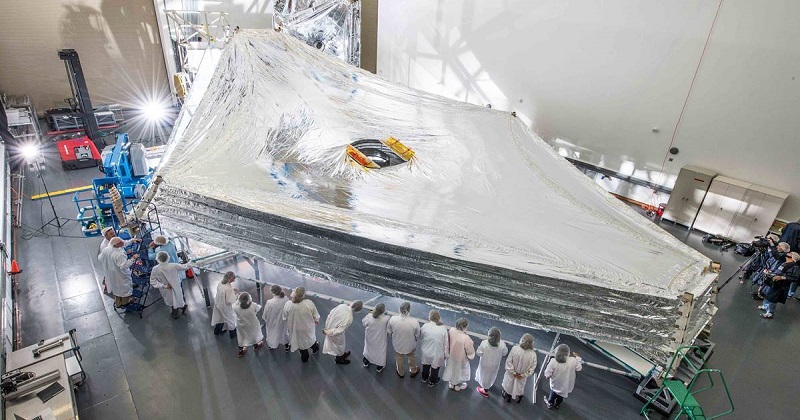
After decades of study and development, NASA finally launched the James Webb telescope last Christmas. The historic launch succeeded after some delays, but that was only the beginning due to the complexity of the honeycomb-shaped space telescope. The telescope’s most significant parts were then deployed in a number of steps.
The moveable elements of the James Webb telescope were folded in order for the telescope to fit within the 16-foot Ariane 5 rocket. Before the $10 billion telescope can completely take shape, it must complete 50 main deployments and 178 release mechanisms. The telescope has now reached the most critical stage of deploying its gigantic five-layer sunshield, which is the size of a tennis court.
On Monday, NASA began tensioning the first layer of the sunshield, followed by the second and third layers. The crew spent five and a half hours total tensioning these three layers, which are the ones closest to the sun. Tomorrow, the final two layers of Webb’s sunshield will be tensioned.
‘The membrane tensioning phase of sunshield deployment is especially challenging because there are complex interactions between the structures, the tensioning mechanisms, the cables and the membranes’, said James Cooper, NASA’s Webb sunshield manager, based at Goddard Space Flight Center.
Also Read: Israeli photographer captures flock of birds forming the shape of a spoon
The sunshield will be fully deployed when the final two layers are tensioned. This five-layer sunshield is crucial since it shields the telescope from the sun’s rays. As the James Webb telescope will be observing infrared light, the instruments inside the telescope must be kept extremely cold. It will be protected not just from the sun rays, but also from other sources of light and heat, including heat created by the observatory itself.
The second Lagrange point, or L2, is 1 million miles distant from Earth and the final destination for the James Webb telescope. The Webb telescope, unlike the Hubble, will not orbit the Earth; instead, it will orbit the sun. The objective of the telescope is to look for extremely faint infrared signals from very far away objects in order to aid scientists in their research into the origins of our cosmos.

Post Your Comments